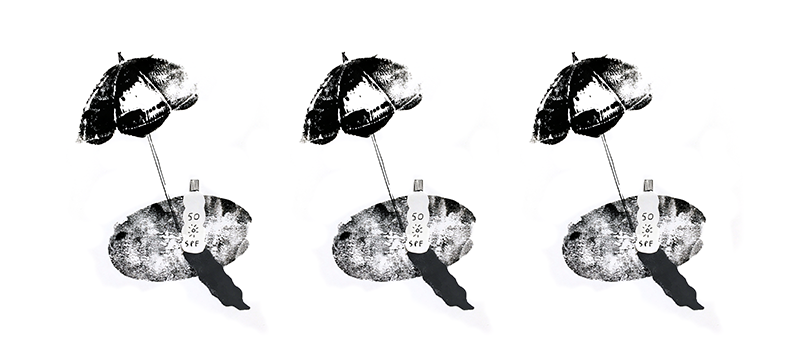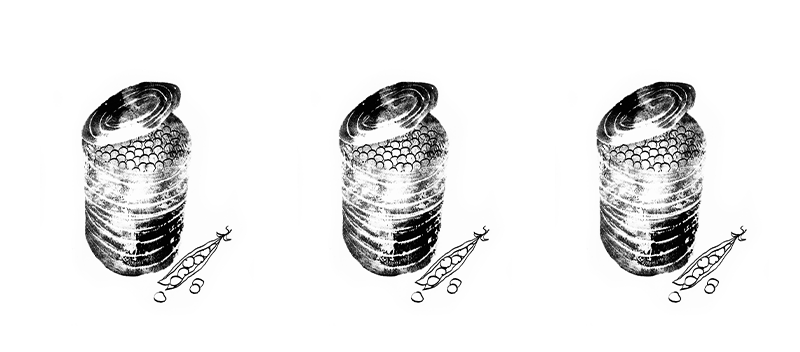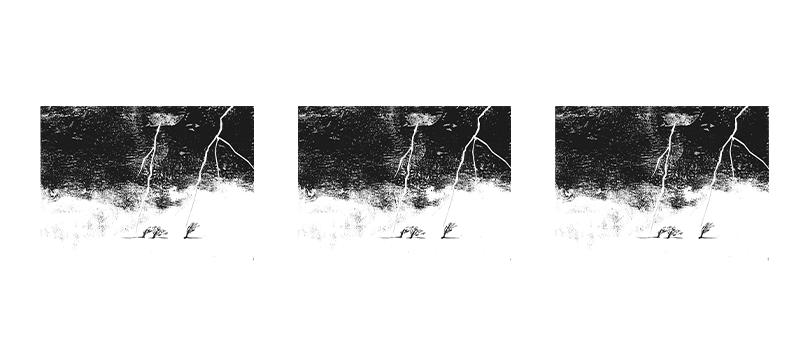‘Sunlight consists of visible light and ultraviolet (UV) light,’ explains Bauke Albada, assistant professor of Organic Chemistry. There are three kinds of UV rays: A, B and C. The C rays get filtered out by the ozone layer, while the first two reach the Earth’s surface and penetrate your skin. UVB (B for burn) causes an inflammation response in the skin, making it red and painful. In other words, you are sunburnt. UVA (A for ageing) penetrates deeper into the skin, causing ageing and wrinkles. Both sorts of UV radiation also damage your DNA, which can cause cancer.
Skin damage is caused by energy-rich photons (light particles) in the UV rays. Sunscreen filters out those UV rays with chemical or mineral filters. Chemical filters absorb the photons, while mineral filters deflect them. Albada: ‘As a result, the radiation does less damage – like a bullet that just grazes you.’ There are also natural sunburn products such as those based on raspberry seed oil. ‘Those oils contain a lot of unsaturated fats that capture the radiation and thus provide a sun protection factor of 30 to 50.’
The sun protection factor (SPF) indicates how much UVB radiation the sunscreen filters. ‘It only measures how well it protects you against burning,’ says Albada. ‘It doesn’t tell you anything about protection against UVA rays. Not that it can’t protect you against them, but no research is done on that. If you want to be protected against UVA, check whether your sun protection product contains zinc oxide or avobenzone.’
Applying factor 20 and then factor 30 doesn’t add up to factor 50
Bauke Albada, assistant professor of Organic Chemistry
The higher the SPF, the more UVB radiation the product blocks. So factor 30 lets through one thirtieth of the radiation (about three per cent) and blocks 97 per cent. For factor 50, that is one fiftieth, so two per cent. People who burn after 10 minutes without sunscreen can’t spend more than 300 minutes in the sun when using factor 30. It’s important to reapply sunscreen regularly, but ‘reapplying only replaces the cream that has been wiped away or sweated off,’ says Albada. Unfortunately, you don’t get another five hours with every new layer of factor 30, because your skin has been absorbing radiation all that time. After five hours you will have to get out of the sun. ‘And applying factor 20 and then factor 30 doesn’t add up to factor 50. You only get the protection level of the highest factor cream,’ says Albada. It’s not handy to mix two creams either, because you then dilute the sun cream with the highest factor and you get an SPF that’s somewhere in between the two.
Every day we are bombarded with sometimes contradictory information. So what are the facts of the matter? In this feature, a scientist answers your burning questions. Asking questions makes you wiser. Do you dare ask yours? Email us at redactie@ resource.nl

 Illustration: Marly Hendricks
Illustration: Marly Hendricks 

